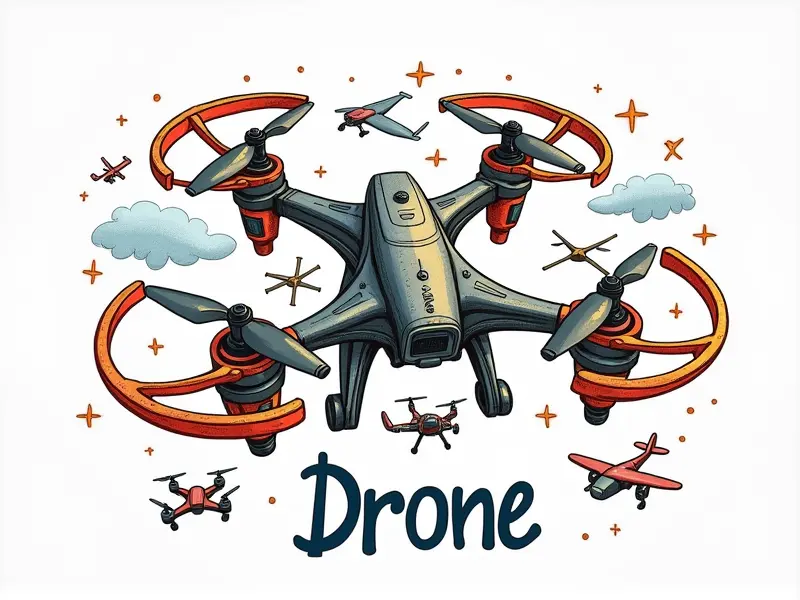How does an RC airplane work?

Remote control (RC) airplanes are fascinating machines that combine the thrill of flight with intricate mechanics and aerodynamics. Understanding how these aircraft operate can provide valuable insights into their functionality, performance, and maintenance. This article delves into the inner workings of RC planes, covering everything from basic controls to advanced aerodynamic principles.
How Do RC Airplanes Fly?
The flight of an RC airplane is governed by fundamental principles of physics and engineering. These aircraft are designed to mimic real-world airplanes in terms of their structure and functionality. The primary components that enable flight include the airframe, propulsion system, control surfaces, and aerodynamic design.
Inside the Mechanics of RC Planes
The mechanics of an RC airplane involve a complex interplay between various systems:
- Airframe: The frame is typically made from lightweight materials such as foam or balsa wood to ensure maneuverability and stability.
- Propulsion System: This can be either an internal combustion engine (ICE) or an electric motor, each with its own advantages in terms of power-to-weight ratio and environmental impact.
- Control Surfaces: These include the ailerons, elevator, rudder, and flaps. They are actuated by servos controlled via radio signals from the ground-based transmitter.
Understanding RC Plane Controls
The control of an RC airplane is managed through a handheld transmitter that sends commands to the aircraft's receiver. The pilot manipulates sticks on the transmitter to adjust the position of the control surfaces:
- Ailerons: Control roll by banking left or right.
- Elevator: Controls pitch, allowing the plane to climb or dive.
- Rudder: Manages yaw, enabling turns and directional changes.
Secrets of RC Plane Aerodynamics
Aerodynamic principles are crucial for the efficient flight of an RC airplane. Key concepts include lift, drag, thrust, and weight (or gravity). These forces interact to determine the plane's performance:
- Lift: Generated by air flowing over the wings, creating a pressure difference that propels the aircraft upward.
- Drag: Resists forward motion and is minimized through streamlined design and proper wing shape.
RC Plane Engine vs Electric Motors
The choice between an RC plane engine (ICE) and an electric motor depends on several factors:
- Performance: ICE engines offer higher power output but are heavier. Electric motors provide instant torque and are lighter.
- Maintenance: ICE engines require regular maintenance, while electric motors have fewer moving parts and thus lower upkeep costs.
Basics of Flying RC Airplanes
Flying an RC airplane involves mastering basic maneuvers such as takeoff, landing, turns, and stalls. Proper technique is essential to ensure safe and enjoyable flights:
- Takeoff: Gradually increase throttle while maintaining a steady pitch.
- Landing: Reduce speed and angle of attack to touch down smoothly.
RC Plane Lift and Drag Demystified
The balance between lift and drag is critical for sustained flight. Understanding these forces helps in optimizing the aircraft's performance:
- Lift: Created by the wing's curvature, it counteracts gravity.
- Drag: Includes parasitic drag (from air resistance) and induced drag (from lift generation).
How RC Pilots Control Planes
Piloting an RC airplane requires skillful manipulation of the transmitter to control various aspects of flight:
- Throttle: Adjusts engine speed or motor power.
- Elevator: Controls pitch for ascending and descending.
Secrets of RC Plane Stability
Maintaining stability is key to safe flight. Factors such as center of gravity, wing dihedral, and tailplane design contribute to a stable aircraft:
- Center of Gravity (CG): Proper CG ensures balanced flight.
- Dihedral Angle: Wing angle up from the horizontal plane for stability.
RC Plane Propulsion Explained
The propulsion system is vital for generating thrust. Whether using an ICE or electric motor, efficient power delivery ensures optimal performance:
- ICE Engines: Provide high power but require fuel and maintenance.
- Electric Motors: Offer instant torque and are environmentally friendly.
The Science Behind RC Aircraft Flight
The science of flight in RC airplanes encompasses aerodynamics, mechanics, and control systems. By understanding these principles, pilots can enhance their skills and optimize aircraft performance:
- Aerodynamic Principles: Lift, drag, thrust, and weight.
- Mechanical Components: Airframe, propulsion system, and control surfaces.
Conclusion
The operation of an RC airplane is a blend of mechanical engineering, aerodynamic principles, and skilled piloting. From the intricate mechanics of the airframe to the sophisticated controls managed by the pilot, each aspect contributes to the thrilling experience of flying these miniature marvels. By delving into the science behind RC aircraft flight, enthusiasts can gain deeper insights and improve their skills in this captivating hobby.

